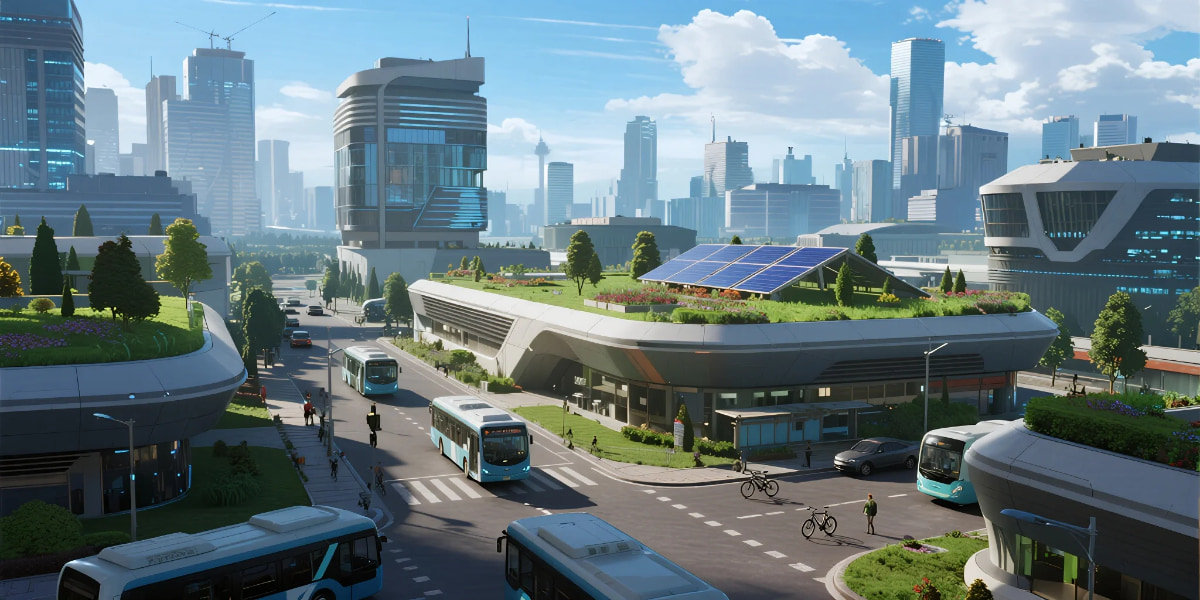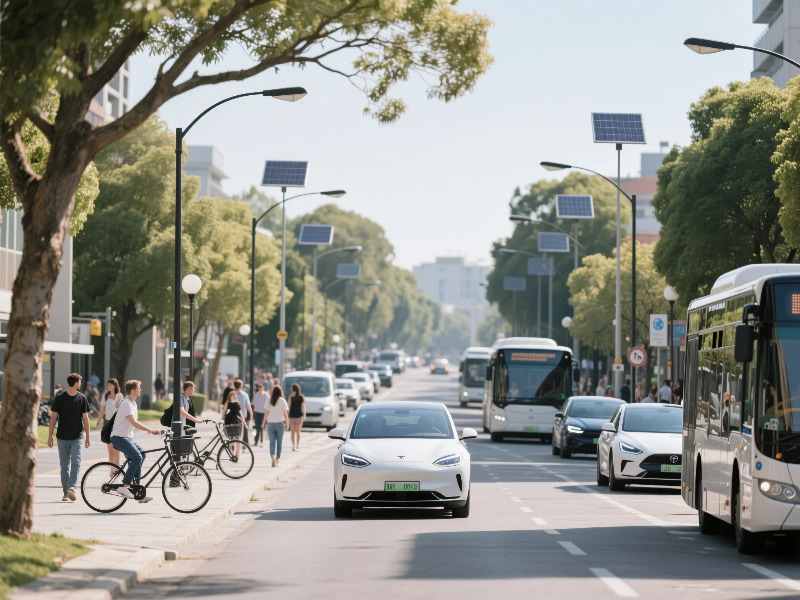Pollution-Free City: Ways to Make Urban Areas Cleaner and Greener

Introduction
Creating a Pollution-Free City is no longer a distant dream. Urban areas around the world are grappling with increasing air and water pollution, traffic congestion, and waste management issues. Building a cleaner, greener city benefits public health, reduces environmental hazards, and enhances quality of life. In this article, we will explore effective ways to make a Pollution-Free City, including government policies, community actions, and sustainable technologies that anyone can support.
Focus Keyword Usage in Intro: Pollution-Free City (×1)
Understanding the Concept of a Pollution-Free City 🌍
A Pollution-Free City is one where air, water, and soil pollution are minimized, and natural resources are conserved responsibly. It involves coordinated efforts between government authorities, the private sector, and citizens. Cities that prioritize sustainability often use smart technology to monitor pollution, enforce regulations, and promote eco-friendly practices.
Key Strategies Include:
- Air quality monitoring
- Waste reduction and recycling
- Green urban planning
- Renewable energy adoption
Implementing Green Transportation Solutions 🚲
Promote Electric and Hybrid Vehicles ⚡
One of the most effective steps toward a Pollution-Free City is reducing vehicular emissions. Governments can incentivize electric and hybrid vehicles through tax rebates, charging stations, and subsidies. Communities benefit from cleaner air, quieter streets, and lower greenhouse gas emissions.
Expand Public Transport and Non-Motorized Options 🚌🚶♀️
Investing in reliable public transport reduces the number of private vehicles on the road. Encouraging cycling, walking paths, and shared mobility services contributes significantly to urban sustainability.
LSI Keywords: Urban Pollution Control, Green City Initiatives
Waste Management and Recycling Programs ♻️
Implement Comprehensive Recycling Policies 🗑️
Recycling and proper waste disposal are vital for a Pollution-Free City. Cities should introduce curbside recycling, separate organic waste collection, and education campaigns about proper disposal.
Promote Circular Economy Practices 🔄
Adopting a circular economy reduces landfill dependency and encourages the reuse of materials. This approach not only lowers pollution but also creates jobs in recycling industries.
LSI Keywords: Ways to Reduce City Pollution, Eco-Friendly Urban Practices
Green Urban Planning and Development 🌳
Increase Green Spaces and Urban Forests 🌲
Parks, gardens, and urban forests absorb pollutants, reduce heat islands, and improve mental well-being. Planting trees along roads and designing rooftop gardens are effective strategies.
Sustainable Building Practices 🏢
Using energy-efficient materials, rainwater harvesting systems, and solar panels contributes to a Pollution-Free City. Urban developers should incorporate sustainability guidelines in all new projects.
LSI Keywords: Smart City Sustainability, Green Infrastructure
Renewable Energy and Clean Technologies ☀️
Solar, Wind, and Geothermal Solutions 🌬️
Transitioning to renewable energy sources reduces reliance on fossil fuels, thus lowering air pollution. Cities can provide incentives for households and businesses to adopt solar and wind energy.
Smart Pollution Monitoring Systems 📊
IoT sensors and AI-driven pollution tracking enable cities to respond quickly to environmental hazards. Real-time data helps authorities implement targeted interventions.
Community Engagement and Awareness 👥
Citizen Participation Programs 🙌
Community involvement is crucial for a Pollution-Free City. Residents can organize clean-up drives, tree-planting campaigns, and local sustainability workshops.
Educational Initiatives 📚
Schools and universities should include environmental education in their curricula. Awareness programs on waste segregation, energy conservation, and eco-friendly practices inspire lifelong
Effective Government Policies and Regulations 🏛️
Enforce Strict Pollution Control Laws ⚖️
Governments should monitor industrial emissions, regulate vehicular pollution, and set strict penalties for violations. Compliance ensures cities move closer to being pollution-free.

Incentivize Green Businesses 💼
Providing tax breaks and funding opportunities encourages companies to adopt sustainable practices, such as eco-packaging, renewable energy use, and green supply chai
Innovative Smart City Solutions 🏙️
IoT and AI for Pollution Tracking 🤖
Smart sensors track air quality, water contamination, and traffic emissions. AI analyzes data for urban planners, helping to implement timely solutions.
Mobile Apps for Citizen Reporting 📱
Apps allow residents to report illegal dumping, air pollution, or noise complaints. This participatory approach strengthens community engagement and enforcement.
Case Studies of Successful Pollution-Free Cities 🌎
- Copenhagen, Denmark – Achieved major reductions in air pollution through cycling infrastructure and renewable energy.
- Singapore – Combines green urban planning, vertical gardens, and stringent waste management to maintain low pollution levels.
- Vancouver, Canada – Focuses on renewable energy, public transit, and community engagement programs to reduce urban emissions.
LSI Keywords: Eco-Friendly Urban Success, Global Green Cities
FAQs about Pollution-Free City ❓
Q1: What is a Pollution-Free City?
A Pollution-Free City is an urban area with minimal air, water, and soil pollution, maintained through sustainable practices and citizen participation.
Q2: How can citizens contribute?
Residents can use public transport, recycle waste, plant trees, and participate in community awareness programs.
Q3: What role does government play?
Governments enforce pollution laws, fund green initiatives, and incentivize businesses to adopt eco-friendly practices.
Q4: Which technologies help monitor pollution?
IoT sensors, AI analytics, and mobile reporting apps help track pollution levels in real-time.
Call to Action (CTA) 📢
Join the movement to create a Pollution-Free City! Start by planting trees, using sustainable transport, and reducing waste in your community. Share this guide on social media to inspire others to act today. 🌿
Conclusion ✅
A Pollution-Free City is achievable through the combined efforts of governments, communities, and individuals. Green transportation, renewable energy, smart technology, and public awareness are key. By adopting these strategies, cities worldwide can become cleaner, healthier, and more sustainable for future generations
Related
Discover more from Ecofriendly
Subscribe to get the latest posts sent to your email.





https://shorturl.fm/pkIaZ
thanks